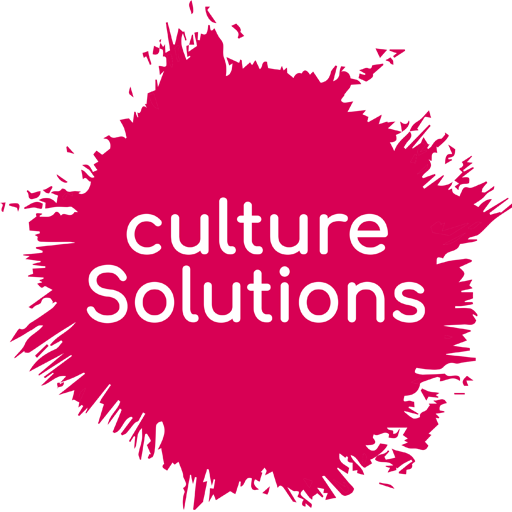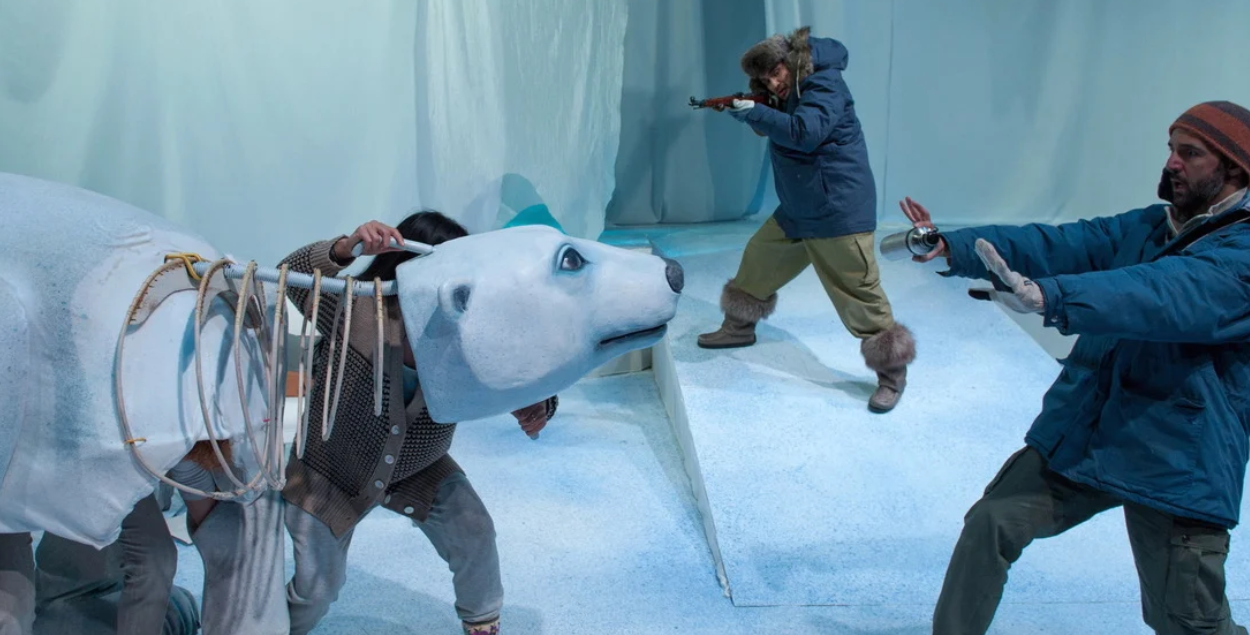Weapons and renewable energy for peace and climate: A European Culture Facility
By Damien Helly
Over a one year into the Russian invasion of Ukraine, this blog post argues that the EU and its Member States urgently need to adjust their external cultural action to recent geopolitical paradigm shifts. As recent crises led to further European integration in the banking, industry, space and defence sectors, it is now time to create a European Culture Facility to live up to climate and cultural challenges and avoid risks of international audiences’ indifference, if not resentment.
We will find the appropriate name and legal basis for the agency later. But the EU strongly needs it. With and beyond Ukraine.
The other fronts: cultural engagement and perceptions
The EU is focusing on assistance to Ukraine and on war efforts in all critical sectors, making unprecedented political breakthroughs, few years after the historical creation of the first EU-wide banking and fiscal mechanisms: energy, defence, new technologies, industrial policy, raw materials and rare earth, space defence. The attention is now, and rightly so, all on the outcome of the war. At the same time, climate emergencies increase, while global powers are making little progress towards carbon emissions targets and biological resilience results.
Authoritarian regimes’ attacks against the cultural features of “the collective West” (colonial memories, memories of 2003 the Iraq invasions, restrictive migration policies, but also fundamental freedoms, cultural and sexual rights, multiculturalism, women empowerment) are happening on numerous fronts in Europe as well as on other continents. When they exist, cultural resentment against an imagined Europe (and “the West”), or mere cultural indifference, are often here to stay. These cultural challenges will not vanish with a Ukrainian victory, on the contrary.
Wars start (and continue) in the minds of people: foreign and security policy is also cultural.
Recent ECFR surveys also show that, although Europeans feel the West is “strong”, their unity is “fragile”, as they “are looking inward and relying even more than before on the US”. Recent tensions between Poland and Germany on the memories of World War II and on support to Ukraine underline the constant need for cultural dialogue on common European futures. How to ensure Europeans keep looking outward and listening to the rest of the world?
Climate wars and cultural shifts
Climate action is also cultural action and entails cultural shifts, and the war in Ukraine tends to make Europeans forget this global existential threat. The mainstreaming of cultural methods into climate programmes is as important as the greening of all partnerships, from forest to oceans, from carbon sequestration technologies to hydrogen production and rare earths recycling.
Awareness raising efforts, aesthetical schocks and collective emotions are part of the solutions to achieve behaviour change towards climate-resilient practices. Everything remains to be done in this realm. The principle of a Loss and Damage fund for developing countries has just been validated at COP 27 but the conditions of its implementation will have to be clarified and supported creatively. Just Energy Transitions will not happen with magic wands but through sustained and interculturally sensitive dialogue mixing economic, social and environmental narratives, and incentives with respect for local communities’ identities.
To give a soul and culturally deep meaning to climate action and to respond to authoritarian regimes’ attacks on the cultural front, the EU needs thought leadership and political creativity to guide narratives beyond the managerial logic of funding programmes and projects. Member States are still either under equipped, or are doing too little, and have almost no cultural collective ambitions. EU Member States are still divided by their numerous defence and security imaginaries (From European strategic autonomy to NATO, uniforms, heroes and historic battles). In peace times, the diversity of security cultures might be healthy, but costly. Recent moves to coordinate support to Ukraine, via NATO and the European Peace Facility, have shown that unity and resource pooling can produce effects.
New challenges require bold leadership, and new tools
The European Peace Facility will probably not finance cultural action for peace. And even if it had plans to do so, it is unlikely that all cultural professionals would accept to receive funds from the same pot that has provided lethal equipment to EU’s partners.
EU strategic communications and public diplomacy will never replace the wealth and depth of Europe’s diverse external cultural relations engagement, because they don’t operate along the same paradigms, as recalled by the European Parliament in its report on EU international cultural relations .
European Member States’ individual cultural standing worldwide, with a pinch of EUNIC membership, may at first feel comfortable as a way to cultivate authenticity and creativity. Yet when one Member State is under attack by external forces, it becomes rapidly vulnerable, and it will look for support and solidarity from larger entities and allies. But neither NATO, the US or even UNESCO have the specific mandate to protect and promote the diversity of European and EU cultural engagement worldwide.
The Ukraine crisis is an opportunity for European Member states to become more united in the cultural field internationally, while respecting the subsidiarity principle, cultural diversity and the logic of EU added value. If unprecedented steps can be made in the banking, industrial, space and defence sectors, Member States could apply the same emergency solidarity, unity and upscaling logic to the cultural sector, by laying the foundations of an External Cultural Action Agency, or a Culture Facility.
The EU needs thought leadership and political creativity to guide narratives beyond the managerial logics of funding programmes and projects.
The seeds of such a body already exist, but they are scattered between different institutional and political set-ups, producing outputs that will be inadequate and insufficient to match the post-Ukraine global cultural challenges. Despite the launch of a few programmes, culture has not really been a political priority for EU institutions in the last few years (while youth and education have), and even less so now because of the war in Ukraine. The existing networks of organisations involved in EU external cultural action need to be transformed into an agency with larger resources, decision-making autonomy, and capacities to complement Member States and EU Delegations’ actions in the long term.
Not a matter of money
Money is already there, with the NDICI, Creative Europe, Horizon Europe and other financial instruments, including investment banks. Institutions, decision-making bodies and expertise exist in the Council, the Parliament and the Commission. The technical and implementation arms of cultural programming (Member States cultural institutes networks and agencies, EU Delegations and various programmes) are in action daily, but they manage limited resources (compared to other sectors) through dozens of separated silos, and with very limited human resources. The following EU initiatives require a more clearly articulated combination of both their cultural and international stances:
- the cultural dimension of the Global Gateway;
- EFSD+ financial mechanisms, EIB and EBRD international cultural portfolio;
- the external dimension of the New European Bauhaus (apart from a programme with Ukrainian cities, for instance a pilot architectural investment programme for climate-resilient EU Delegations worldwide could be launched);
- the external and cultural dimensions of the EU digital package to regulate large platforms and anticipate the development of metaverses;
- the external component and global outreach of the recent EIT innovation community on creative industries.
Specialised cultural organisations in Europe are already active and keen to engage but it seems they now all depend on EU funds or focus on internal European cultural dynamics or national initiatives: EUNIC needs EU money to implement European projects. Germany, once a leader on EU international cultural relations, is reducing the financing of the Goethe Institute. France has underestimated the European dimension of its external cultural action and is now slowly promoting it, with new investments and engagement via the Agence Française du Développement and Expertise France, both chasing EU funds. Other Member States have lost most of their external cultural capacities some time ago (Portugal, Poland) or have limited resources (Spain, Italy, Ireland, Greece, to name but a few). The European Cultural Foundation has reoriented its investments towards Europe-wide dynamics (including Ukraine and rightly so). The More Europe/Global External Relations initiative has been closed down after a decade of advocacy and knowledge production.
In war times, and despite the Mondiacult declaration on culture as a global public good, UNESCO is straight-jacketed by its international organisation and diplomatic logic. It also relies on EU programme funds to implement large-scale initiatives. Diplomatic tensions around the Russian war could even undermine ongoing efforts to include culture as an explicit sustainable development goal and these negotiations will require top-level EU leadership.
In the field of emergency cultural heritage protection, ALIPH has emerged as an ad hoc format, but its actions in Ukraine are now partly funded by the EU. The EU film festivals have produced some effect but they are still very modest and can hardly compete with online streaming to reach out significant audiences. ARTE, now available in six languages and also partly funded by the EU, is perhaps the most promising audiovisual platform on European cultures to engage audiences globally. Its development requires sustained and large-scale investments.
This existing constellation of Member States, institutions and partners would benefit from joint decision-making at the level of an autonomous executive body empowered to promote and boost European external cultural action in line with EU’s existing policy commitments. In 2023, to match global climate-related and security threats, and address growing misunderstanding about Europeans’ international intentions, the creation of an External Cultural Action Agency, a Culture Facility, should be the long-term horizon for an effective and impactful European cultural presence worldwide. For, with, and beyond Ukraine.
The views expressed in this article are personal and are not the official position of culture Solutions as an organisation.
Photo credit: A.R. Sinclair

